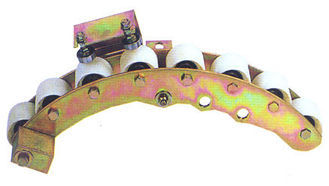Spinach efficient cultivation "Trilogy"
Sowing: Spinach is primarily sown using sand, but it can also be broadcast. In high-temperature conditions, where germination is slow, it is recommended to soak the seeds before sowing in early autumn. This involves soaking the seeds for 12 hours, then placing them in a refrigerator at 4°C for 24 hours to promote germination. After that, they should be kept at a temperature between 15°C and 25°C for several days until they sprout. Once germinated, the seeds can be spread evenly. The seeding rate is typically around 10 kilograms per acre. After sowing, cover the seeds with a thin layer of soil or apply manure water, followed by covering with straw or melon vines to lower the ground temperature and maintain soil moisture.
Sowing after the first ten days of September does not require pre-germination, and the seeding amount can be reduced to between 5 and 7.5 kilograms per mu. This method helps save on seed costs while still ensuring a good yield.
Field Management: Proper field management mainly focuses on fertilization and irrigation. Before planting, it's essential to apply base fertilizer, usually in the form of well-rotted manure or compost. Top dressing can be done in conjunction with irrigation. When the seedlings are small, use diluted human excrement as a fertilizer. As the plants grow and temperatures drop, the concentration of the fertilizer can be gradually increased. Spinach is often harvested in multiple stages, and each time after a harvest, additional top dressing should be applied. During the early growth stages, it’s important to remove weeds promptly and pay attention to pest control, especially for mites that may damage the crop.
Harvesting: Autumn spinach leaves typically grow to more than 15 cm in length. Harvesting should begin when the plants become crowded, and it is recommended to harvest every 20 days. This ensures that the plants are not overgrown and maintains their quality. Regular harvesting also encourages new growth, leading to a longer and more productive growing season.
By following these sowing, management, and harvesting techniques, farmers can achieve better yields and higher-quality spinach crops. It’s important to monitor weather conditions and adjust practices accordingly to ensure optimal growth. Additionally, maintaining proper soil moisture and nutrient levels throughout the growing period is crucial for healthy plant development. With careful attention and timely actions, spinach cultivation can be both efficient and profitable.
Escalator Components
- Down Driving Device , 30° Angle
- Yellow Taut Bow Used For Escalator / Escalator Components
- Durable Clamping Panel Used For Schindler Escalator
- Roller Arc Parts For Escalator Components
product
- SWE Upward Driving Device For Escalator , Escalator Components
- Yellow Comb Plate , Escalator Components / Parts
- Finger Protective Switch For Escalator Components / Parts
- Reversing Chain , Durable Escalator Parts
- Durable Clamping Panel Used For Schindler Escalator


Escalator Components, Support Roller, Down Driving Device, Durable Clamping Panel
Ningbo Xinda Elevator Traction Technology Co., Ltd. , https://www.xinda-elevator.com